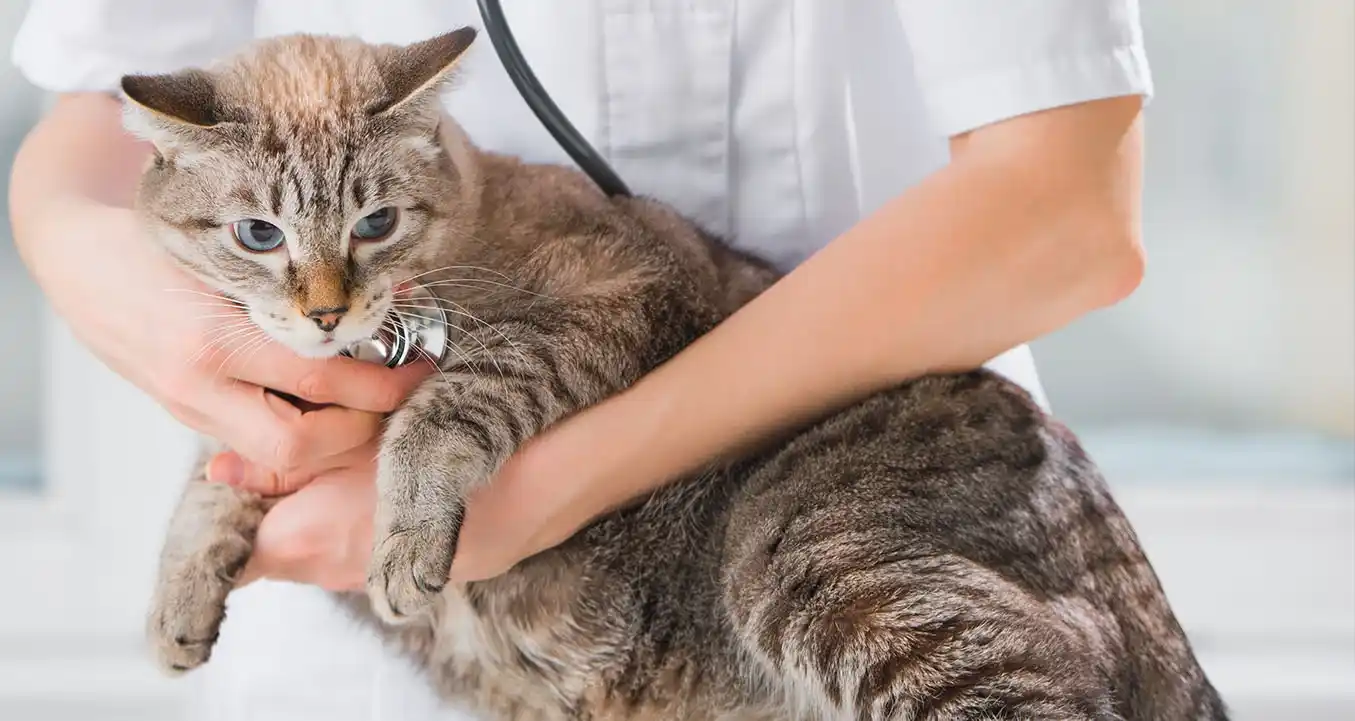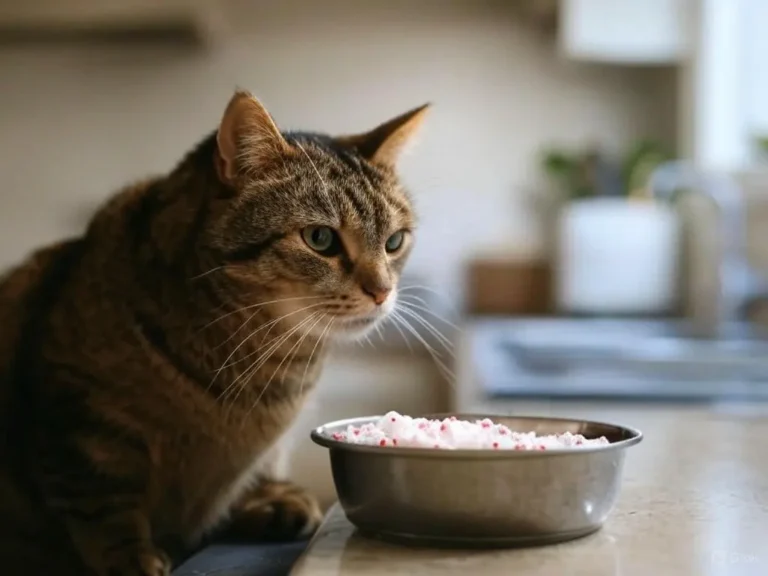
Hey, cat lovers! If you’ve got an unspayed female cat—or you’re just curious about what spaying’s all about—you’re in the right place. Spaying a cat isn’t just a vet visit; it’s a big decision that can change your kitty’s life (and yours) for the better.
I’ve been through it with my own tabby, and trust me, it’s worth understanding the ins and outs.
In this guide, we’ll cover what spaying is, why it matters, the process, recovery tips, and how it ties into those wild heat cycles. By the end, you’ll feel like a pro, ready to make the call for your feline bestie.
What Does Spaying a Cat Mean?

Spaying (or ovariohysterectomy, if you’re feeling fancy) is a surgery where a vet removes a female cat’s ovaries and uterus.
It’s a one-and-done deal that stops her from going into heat or getting pregnant. Think of it like hitting the “off” switch on her reproductive system.
My vet explained it as a routine procedure—cats don’t need those parts to live happy lives, and removing them can actually keep them healthier. Pretty cool, right?
Why Spaying Matters
So, why go through with it? I’ll break it down from my own experience and what I’ve learned:
- No More Heat Cycle Drama: Those yowling, restless nights from a cat in heat? Spaying shuts down that chaos—no more cycling through Proestrus, Estrus, Metestrus, and Anestrus. I’ll dive into that connection later.
- Fewer Kittens, Happier World: Cats are baby-making champs—one mating can mean 4–6 kittens. Spaying keeps the pet population in check. My friend’s unspayed cat had a litter once, and it was adorable but overwhelming!
- Health Perks: It slashes the risk of uterine infections (like pyometra) and mammary cancer. My vet told me spaying before her first heat—around 6 months—drops that cancer risk by about 90%. Wild, right?
- Chiller Vibes: Spayed cats often mellow out—no hormone-driven antics. My tabby went from a heat-cycle diva to a cuddly couch potato after the surgery.
The Spaying Process: What Goes Down
Curious about what happens at the vet? Here’s the play-by-play:
- Before Surgery: You’ll get instructions—usually no food after midnight (water’s fine). My cat shot me the stink-eye when I hid her kibble, but it’s all about keeping her safe under anesthesia.
- The Procedure: Under general anesthesia, the vet makes a small incision near her belly, removes the ovaries and uterus, and stitches her up. It takes 30–60 minutes. I was a nervous wreck, but the vet team made it look easy.
- Aftercare: She’ll come home groggy, maybe rocking a cone (yep, the “cone of shame”). Keep her calm—no jumping or roughhousing—for 7–14 days while she heals.
Need more pointers on post-surgery care? Our Complete Guide to Cat Care Tips for Owners has you covered with all the essentials.
Recovery Tips (From One Cat Parent to Another)
Post-spay recovery feels like a little journey. Here’s what worked for me:
- Cozy Zone: Set up a quiet spot with a soft blanket. My cat loved burrowing into a pile of old sweatshirts—comfort is everything.
- Cone Patrol: If she’s got a cone, make sure she doesn’t wiggle free. I had to tighten it once because she’s a sneaky one!
- Watch the Stitches: Check for redness or swelling daily. Call your vet if something looks funky—better safe than sorry.
- Love & Distraction: Extra pets and gentle play—like a feather wand—kept her spirits up. No wrestling matches, though!
- Food Hack: She might not eat much at first. Warming up some wet food did the trick for mine—smelled too good to resist.
Most cats bounce back in 10–14 days. My tabby was zooming around by day 12 like nothing happened.
How Spaying Ties to the Heat Cycle
Spaying’s the ultimate fix for those heat cycles I mentioned earlier. Before the surgery, your cat might go through some wild phases—think Proestrus with subtle clinginess, Estrus with loud yowling and flirty moves, Metestrus if she doesn’t conceive, and Anestrus for a winter breather.
It’s a loop that can hit every 15–21 days during breeding season. Want to know where she’s at in that cycle before you spay? Our Cat Heat Cycle Calculator can help you map it out. After spaying, though? Total peace—no more heat drama, just purrs.
When’s the Best Time to Spay?
Timing’s key, and vets have some solid advice:
- Kittenhood: Aim for 6–8 weeks (if she’s at least 2 pounds) or 5–6 months before her first heat. Early spaying maxes out those health perks.
- Adult Cats: Anytime works, though recovery might take a tad longer. I spayed my cat at 2, and she handled it like a champ.
Wondering how old your cat is in human years? Our Cat Age Calculator is a fun way to figure it out and plan the best time for her procedure. Always chat with your vet—they’ll tailor it to her needs.
Spaying Myths Busted
Heard some odd rumors about spaying? Let’s set the record straight with a nod to the pros at the American Veterinary Medical Association (AVMA):
- Myth: “She’ll get fat and lazy.” Nope—that’s from overfeeding, not spaying. My cat’s still a lean pouncing machine.
- Myth: “She needs a litter first.” Total nonsense—there’s no benefit, just extra kittens to worry about.
- Myth: “It’s too risky.” Not true—it’s super safe with a good vet. Complications are rare.
The AVMA’s got the science to back this up if you’re into the nitty-gritty details.
Read Also: Understanding the Cat Heat Cycle: Signs, Stages, and More
You’re Ready to Rock This!
Spaying a cat might sound like a big deal, but it’s a simple choice with huge payoffs—calmer days, healthier years, and no surprise kitten parties.
Whether you’re tired of heat-cycle chaos or just want the best for your kitty, you’ve got the full scoop now. I felt so relieved after spaying my tabby—no more yowling, just cuddles and quiet nights.
You’re all set to make the call, cat mom or dad—your furry VIP is lucky to have you!






